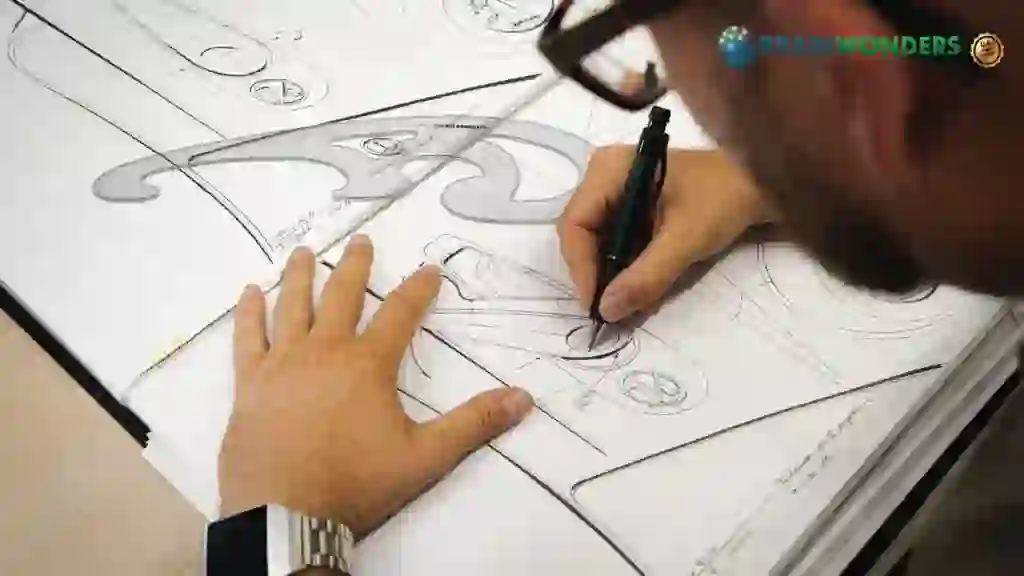How to become an Interior Design 3 yrs Polytechnic
Overview, Courses, Exam, Colleges, Pathways, Salary

Overview
Who is Interior Design 3 yrs Polytechnic ?
An Interior Design 3-year Polytechnic program is a comprehensive educational pathway that equips students with the skills and knowledge needed to excel in interior design. This program typically spans three years and provides a well-rounded education encompassing various aspects of design, spatial planning, aesthetics, and functionality. Students learn to create innovative and functional interior spaces for residential, commercial, and hospitality settings.
The curriculum covers design principles, materials and finishes, drafting, computer-aided design (CAD), 3D modelling, project management, and sustainable design practices. Through hands-on projects and workshops, students gain practical experience in conceptualizing, planning, and executing interior design solutions that meet client needs and industry standards.
Throughout the program, emphasis is placed on creativity, critical thinking, problem-solving, and practical communication skills. Graduates of this program are prepared to work as interior designers, space planners, or design consultants in architecture firms, design studios, real estate companies, and more. They are equipped to bring their creative visions to life, transforming spaces into aesthetically pleasing, functional, and impactful environments.
Typical day at work
What does Interior Design 3 yrs Polytechnic do?
An Interior Design 3-year Polytechnic graduate possesses a diverse skill set to create functional, aesthetically pleasing, and innovative interior spaces. Their roles and responsibilities include:
- Space Planning: They analyze spatial layouts and develop efficient floor plans, considering traffic flow, ergonomic design, and functionality for residential, commercial, or institutional spaces.
- Conceptualization: Interior designers conceptualize design themes, colour palettes, and aesthetics that align with client preferences and project requirements.
- Material Selection: They choose appropriate materials, finishes, fabrics, and furnishings to create cohesive and visually appealing interior environments.
- Design Development: Transforming concepts into detailed designs, interior designers create drawings, sketches, and computer-generated visualizations to communicate their ideas effectively.
- CAD and 3D Modeling: Proficiency in computer-aided design (CAD) software and 3D modelling tools enables designers to create accurate renderings and blueprints.
- Project Management: Interior designers manage projects from conception to completion, overseeing timelines and budgets and coordinating with contractors and suppliers.
- Client Interaction: They collaborate closely with clients to understand their needs, preferences, and budget constraints, translating these into design solutions.
- Spatial Enhancement: Through furniture arrangement, lighting design, and spatial manipulation, designers enhance the functionality and ambience of interior spaces.
- Sustainable Design: Integrating eco-friendly practices, interior designers focus on selecting sustainable materials and implementing energy-efficient designs.
- Colour Coordination: They choose colour schemes that evoke desired emotions and align with the design concept.
- Detail-oriented: Interior designers pay meticulous attention to details, ensuring every element complements the design and contributes to the overall aesthetic.
- Trend Awareness: Staying updated with design trends and innovations helps designers offer contemporary and relevant solutions.
- Presentation Skills: Clear communication skills enable designers to present their ideas persuasively to clients, team members, and stakeholders.
- Collaboration: Interior designers work alongside architects, contractors, and other professionals to ensure seamless project execution.
- Problem Solving: They address challenges related to spatial constraints, structural limitations, and client demands creatively and effectively.
- Client Satisfaction: Interior designers aim to create spaces that meet functional needs, exceed client expectations, and reflect their style.
Abilities and Aptitude needed
What are the skills, abilities & aptitude needed to become Interior Design 3 yrs Polytechnic?
Becoming successful in Interior Design through a 3-Year Polytechnic program requires a blend of abilities, skills, and aptitudes to create functional and visually appealing spaces. Key attributes include:
- Creativity: A strong sense of creativity is crucial to conceiving unique design concepts that align with client preferences and project objectives.
- Attention to Detail: Interior designers must pay meticulous attention to every element, from furniture placement to colour choices, ensuring a cohesive and harmonious design.
- Spatial Awareness: Visualizing and manipulating space is essential for optimizing layouts and ensuring efficient and functional interior environments.
- Aesthetic Sensibility: A keen eye for aesthetics helps designers select colour palettes, materials, and furnishings that create visually pleasing spaces.
- Technical Proficiency: In CAD software, 3D modelling tools, and other design software, designers can create accurate and detailed visualizations.
- Communication Skills: Effective communication is vital to understand client needs, present design ideas, and collaborate with clients, colleagues, and contractors.
- Problem-Solving: Interior designers often encounter challenges such as space limitations or budget constraints, requiring creative problem-solving skills.
- Project Management: Organizational skills are crucial to managing projects, timelines, budgets, and coordinating with various stakeholders.
- Adaptability: Design trends and client preferences evolve, so designers must be adaptable and willing to learn and incorporate new ideas.
- Collaboration: Interior designers work closely with architects, contractors, and clients, necessitating collaborative solid skills to ensure project success.
- Cultural Awareness: Understanding diverse cultures and their design preferences is essential, especially when working on international projects.
- Research Skills: Staying updated with design trends, materials, and innovative solutions requires practical research skills.
- Client-Centric Approach: Designers must prioritize client needs and preferences to create spaces that align with their vision.
- Time Management: Meeting project deadlines and juggling multiple tasks requires practical time management skills.
- Sustainability Mindset: Knowledge of sustainable design practices helps create eco-friendly and energy-efficient interior solutions.
- Drawing and Rendering Skills: Proficiency in hand sketching and digital rendering enhances the ability to communicate design ideas.
- Business Acumen: Understanding business aspects like client contracts and budgeting is for those working independently or starting their design firmsessential.
- Cultural Sensitivity: Sensitivity to diverse cultural preferences ensures designs are inclusive and appealing to a wide range of clients.
- Visualization: The ability to mentally visualize how different design elements will come together is crucial for planning and executing designs effectively.
- Emotional Intelligence: Understanding and addressing clients' emotional and psychological needs in design decisions is valuable.
Salary
Salary for Interior Design 3 yrs Polytechnic?
The salary of An Interior Design 3 Yrs Polytechnic is as follows :
- Minimum Monthly Salary: Graduates of a 3-year polytechnic Interior Design program or those in junior positions can expect a monthly salary ranging from INR 25,000 to INR 50,000. This salary range is typical for entry-level roles in interior design.
- Maximum Monthly Salary: Experienced and highly skilled Interior Designers, especially those working with renowned design firms or specializing in high-end residential or commercial projects, have the potential to earn a monthly salary ranging from INR 1,20,000 to INR 2,50,000 or even more.
- Annual Salary: The annual salary of an Interior Designer who has completed a 3-year polytechnic program can vary widely, ranging from INR 3,00,000 to several lakhs or more. This range is influenced by years of experience, expertise in specific design styles, and the ability to create innovative and aesthetically pleasing spaces.
- Highest Position and Scope: The pinnacle of achievement for Interior Designers often manifests when they reach senior design positions, lead design teams, or establish their design firms. Accomplished Interior Designers with a deep understanding of design principles, intense creativity, and a proven portfolio of successful projects can command significant recognition and compensation. The scope for Interior Designers is promising, fueled by the continuous demand for aesthetically appealing and functional spaces. As architecture evolves, people seek unique living and working environments, and businesses aim to create immersive brand experiences; Interior Designers play a vital role in transforming spaces, enhancing aesthetics, and crafting designs that contribute to the comfort and visual appeal of interior settings.
Ready to become an Interior Design 3 yrs Polytechnic ?
Take the world’s best assessment test !
Take a TestPathways
How to become an Interior Design 3 yrs Polytechnic?
Entrance Exam
Entrance Exam for Interior Design 3 yrs Polytechnic ?
Courses
Which course I can pursue?
Best Colleges
Which are the best colleges to attend to become an Interior Design 3 yrs Polytechnic?
Industries
Which Industries are open for Interior Design 3 yrs Polytechnic?
Graduates of an Interior Design 3-year Polytechnic program have a wide range of industries open, offering opportunities to apply their skills in creating functional and aesthetically pleasing interior spaces. Some of the sectors that welcome Interior Design graduates include:
- Interior Design Firms: Specializing in residential, commercial, or hospitality design, these firms offer opportunities to work on various projects and collaborate with experienced designers.
- Architecture Firms: Collaborating with architects, graduates can contribute their expertise to designing interior spaces that align with broader architectural concepts.
- Natural Estate Development: Graduates can work with real estate developers to design interior spaces for residential, commercial, and mixed-use properties.
- Hospitality Industry: Hotels, restaurants, event venues, and resorts hire interior designers to create attractive and functional spaces that cater to guests' needs.
- Retail and Visual Merchandising: Designing retail spaces that enhance the shopping experience and promote products is essential for retailers.
- Corporate Environments: Companies require interior designers to design offices that reflect their brand identity and optimize employee productivity and well-being.
- Set Design and Staging: In the entertainment industry, graduates can work on film sets, TV shows, theatre productions, and event staging.
- Exhibit and Museum Design: Museums, galleries, and exhibition spaces seek designers to create immersive environments that engage visitors.
- Event Planning and Design: Graduates can contribute their expertise to creating visually appealing setups for various events, from weddings to conferences.
- Residential Design: Independent designers work directly with homeowners to create personalized interior spaces.
- Furniture and Furnishings Industry: Graduates can work for furniture companies, designing pieces or collaborating on collections.
- Renovation and Remodeling: Redesigning existing spaces for improved functionality and aesthetics is a crucial aspect of this industry.
- Healthcare Facilities: Interior designers in healthcare work on creating patient-friendly and ergonomic medical spaces.
- Education Institutions: Designing classrooms, libraries, and common areas in schools and universities enhances the learning environment.
- Nonprofit and Community Organizations: Some NGOs and community centres require interior design services for their facilities.
- Sustainable Design and Green Building: Graduates passionate about sustainable design can work in firms specializing in eco-friendly solutions.
- Residential Homebuilding: Collaborating with homebuilders to design interiors for new residential constructions.
- Cruise Lines and Yachts: Luxury cruise lines and yacht companies require interior designers to create comfortable and luxurious onboard spaces.
- Government and Public Spaces: Public buildings, offices, and civic spaces benefit from functional and aesthetically pleasing interior design.
- Consulting and Freelancing: Some graduates work as independent consultants or freelancers, undertaking various projects.
internship
Are there internships available for Interior Design 3 yrs Polytechnic?
Internships for individuals pursuing an Interior Design 3-year Polytechnic program offer invaluable hands-on experience and a chance to apply classroom learning to real-world projects. Some potential internship options include:
- Interior Design Firms: Interning with established interior design firms allows students to work on various projects, from residential to commercial spaces, assisting senior designers with design development, material selection, and client communication.
- Architectural Firms: Collaborating with firms exposes interns to integrating interior design within broader architectural projects, enhancing their understanding of spatial planning and design aesthetics.
- Real Estate Developers: Interning with real estate developers offers insights into designing spaces within the context of property development, whether residential, commercial, or mixed-use projects.
- Furniture and Furnishing Companies: Internships with companies specializing in furniture, furnishings, and decor allow students to explore the sourcing, selection, and arrangement of interior elements.
- Hospitality Industry: Interning with hotels, restaurants, or event venues offers exposure to designing hospitality spaces, and prioritising guest comfort and aesthetics.
- Retail Design: Internships in retail design expose students to creating visually appealing and functional retail spaces that enhance the customer experience.
- Set Design and Staging: Working in rugged design for theatre, film, or television productions provides experience in creating temporary interior environments that convey specific moods and narratives.
- Event Planning Companies: Event design internships involve creating unique and visually striking setups for various events, such as weddings, conferences, and exhibitions.
- Corporate Environments: Interning with companies may involve designing office spaces that enhance productivity, employee well-being, and corporate branding.
- Residential Interior Design: Some individuals offer independent design services for residential clients, providing opportunities for hands-on experience in home interior design.
- Interior Design Showrooms: Interning with showrooms that display furniture, materials, and decor items provides insight into working with clients and industry suppliers.
- Nonprofit Organizations: NGOs and community organizations occasionally require interior design assistance for spaces used for social activities or services.
- Renovation and Remodeling Companies: Interning with renovation companies exposes students to redesigning existing spaces and working with structural considerations.
- Museums and Galleries: Designing exhibit spaces in cultural institutions offers exposure to creating environments that engage visitors and showcase art and artefacts effectively.
- Educational Institutions: Some schools and universities have design departments that offer internships to assist with classroom design, common areas, and libraries.
Career outlook
What does the future look like for Interior Design 3 yrs Polytechnic?
The future for Interior Design 3-year Polytechnic graduates is promising as the demand for skilled interior designers grows. With an increasing emphasis on creating functional and aesthetically pleasing spaces in various sectors, including residential, commercial, healthcare, and hospitality, opportunities abound. Rapid urbanization and evolving design trends also contribute to the demand. Technological advancements in 3D modelling, virtual reality, and sustainable design practices are reshaping the field. Graduates with a blend of creative vision, technical expertise, and adaptability are well-positioned to excel. Additionally, the rising awareness of sustainable and inclusive design ensures that professionals who integrate these principles will be sought after. As interior design gains recognition for its impact on well-being and productivity, graduates can anticipate a dynamic and fulfilling career path, contributing to transforming spaces in line with evolving societal needs and trends.



